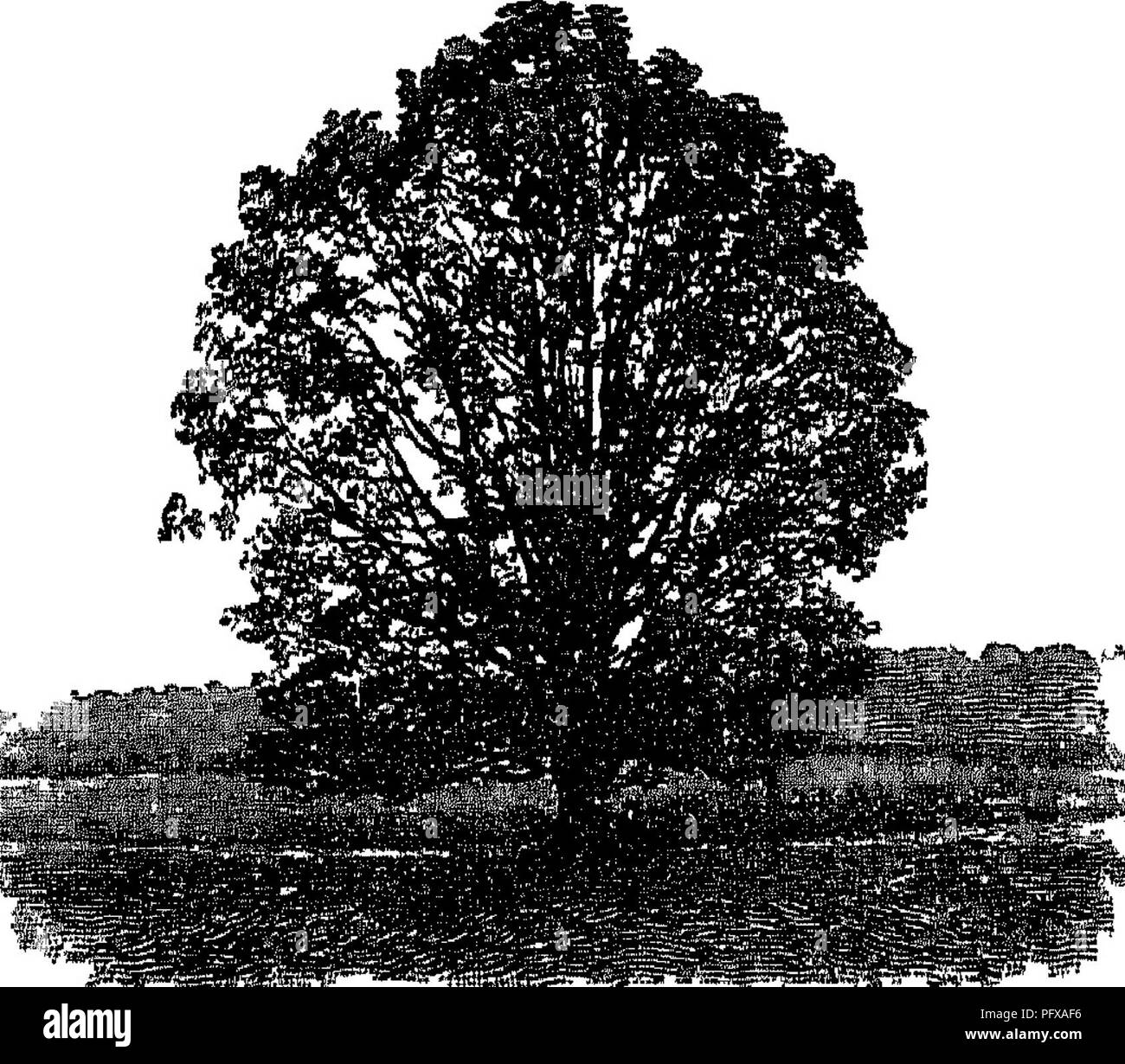. Report upon the forestry investigations of the U. S. Department of agriculture. 1877-1898. Forests and forestry. RATE OF GROWTH. 275. '4,«;aiaSg^i Fig 37 —Oak tree grown in the open sometimes as many as 10 to 13, years before they appear to grow at all, their energy all going into root growth. Then comes a period of more and more accelerated growth, which reaches its maximum rate at 25 or 30 years; and when the cotton wood or aspen has reached the end of its growth in height the spruce or pine is still at its best rate, and continues to grow for a long time at that rate. In later life the ra

Image details
Contributor:
Central Historic Books / Alamy Stock PhotoImage ID:
PFXAF6File size:
7.2 MB (624.3 KB Compressed download)Releases:
Model - no | Property - noDo I need a release?Dimensions:
1688 x 1481 px | 28.6 x 25.1 cm | 11.3 x 9.9 inches | 150dpiMore information:
This image is a public domain image, which means either that copyright has expired in the image or the copyright holder has waived their copyright. Alamy charges you a fee for access to the high resolution copy of the image.
This image could have imperfections as it’s either historical or reportage.
. Report upon the forestry investigations of the U. S. Department of agriculture. 1877-1898. Forests and forestry. RATE OF GROWTH. 275. '4, «;aiaSg^i Fig 37 —Oak tree grown in the open sometimes as many as 10 to 13, years before they appear to grow at all, their energy all going into root growth. Then comes a period of more and more accelerated growth, which reaches its maximum rate at 25 or 30 years; and when the cotton wood or aspen has reached the end of its growth in height the spruce or pine is still at its best rate, and continues to grow for a long time at that rate. In later life the rate decreases, yet height growth sometimes does not cease altogether for centuries. As a rule, the light needing species are the ones which show the rapid height growth at the start, while the shade enduring are slow at the start, but persistent growers. This fact is important in explaining the alternations of forest growth in nature5 the persistent shade-enduring species crowd out the light-needing, and the latter rapidly take possession of any openings that lire or storm has made. It is also important with refeience to the manage- ment of wood crops and starting of mixed plantations; the light- needing species must be mixed only with such shade enduring species as are slower growers than themselves. The diameter growth shows also periodic changes in its rate, and is, of course, influenced in the same way by soil, climate, and light conditions as the height growth. In the juvenile or brush stage, lasting G to 10 years in light- needing and 20 to 40 years in shade enduring species, the cliame ter grows comparatively little, all energy being directed to height growth and root growth. When the crown has been definitely formed more food material is available for wood formation, and the increase in foliage is accompanied by a more rax>id increase of trunk diameter; in favorable situations the highest rate occurs between the fortieth and sixtieth years; in the poorer situations